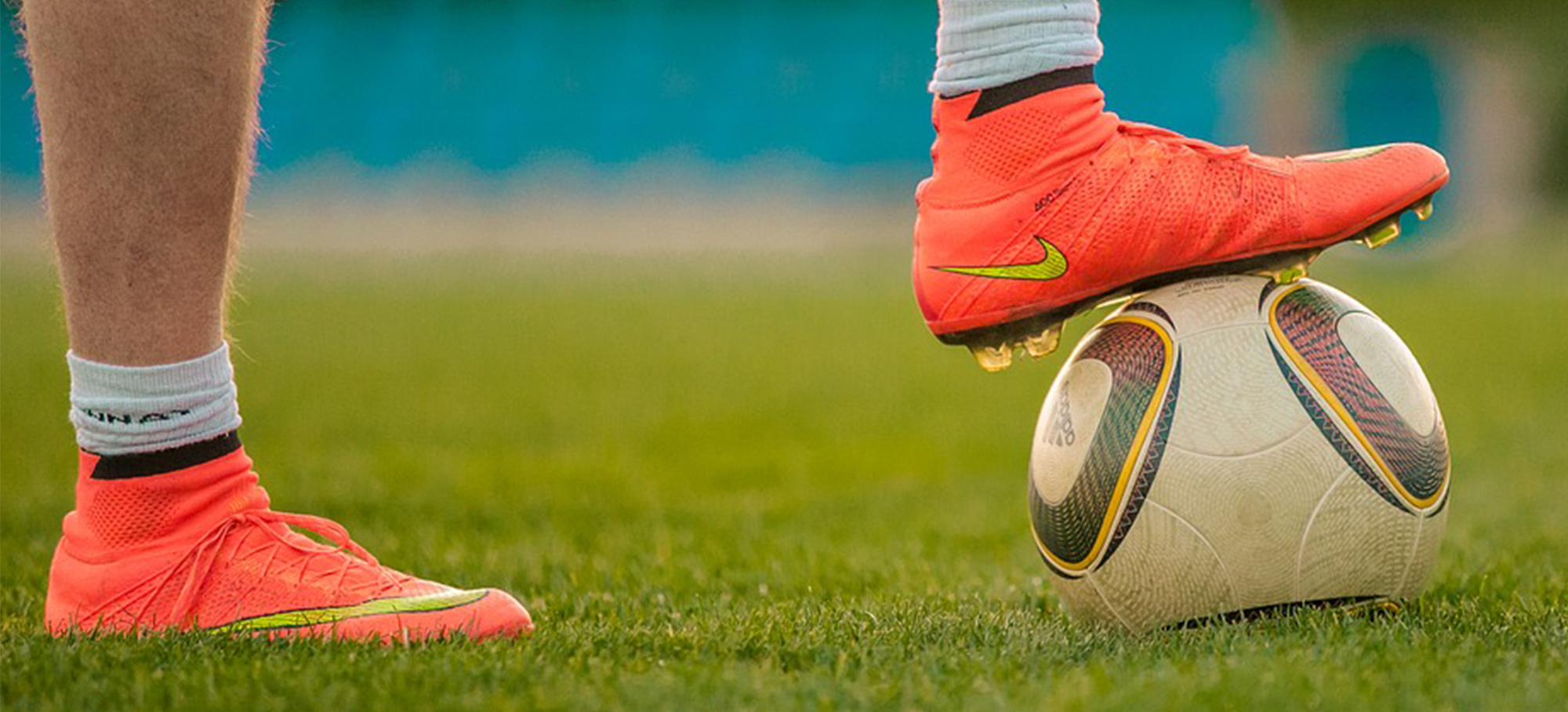Balancing a healthy diet and a consistent exercise routine can often feel like a complicated equation, but successful healthy living is truly about synergy, not sacrifice. The key to long-term,
Finding the Best Soccer Cleats for Your Feet
June 19, 2017 8:56 pm / Category: Soccer

Are your soccer cleats putting you at risk for injury? PT Lyndsay explains how to find the perfect fit for your feet and shares tips on how to make sure your feet stay healthy and happy all season long.
BY LYNDSAY DEFILIPPO, DPT, RAUSCH PHYSICAL THERAPY
If you read my previous article, Tackling Common Soccer Injuries, you already know that the most common injuries sustained on the soccer field involve the ankle and foot complex. One of the risk factors I mention gets very little attention from a health and wellness perspective, but it may just be one of the simplest ways to avoid easily-preventable injuries—your footwear!
With so many brands out there (and superstar athletes to back the sales,) finding your cleat of choice can sometimes be a stressful and expensive task; it’s also one that puts you at risk for injury if the fashion is right but the fit is not. Now, having a tight fit (often a size too small) has always been the go-to for most athletes, as they feel it allows for a heightened control of the ball and better feedback; with that being said, most soccer players are wearing the wrong size shoe.
Finding the Perfect Footwear Fit for You
What Are Your Feet Telling You?
As a physical therapist, I work with and see a lot of feet. Not only do I treat the specific injury my patient presents with, but I also observe all other aspects of their foot/ankle complex to get a complete view of what needs to be done to counteract the damage occurring at the affected body part (and potentially up the chain.) To list a few, I’m looking for blisters, calluses, hammertoes, bunions, ingrown toenails, and wear patterns. Why do I focus on these aspects of the foot? The skin is the largest organ in the body, and it can often give us information regarding one’s health, such as the areas of abuse the foot suffers during sport.
Stiff vs. Flexible Sole
One thing that separates a soccer cleat from your average running shoe is its hard sole. In many cases (not all, as some cleats offer more flexible soles) this key factor can either make or break one’s performance, or send them running to the doc with foot problems.
Some people may enjoy the stiffer sole to allow for greater push-off force and responsiveness to quick movements, while others may like a more natural, softer sole so they can feel the touch of the ball on their feet better. However, the real reason that most soccer cleats have a harder sole may surprise you. A harder sole helps distribute weight and pressure throughout the foot so that the areas directly above the “spikes” don’t receive too many forces when hitting the ground; it offers a greater surface area to distribute the weight equally versus all of the weight through one small area. Think of one person standing on 100 evenly distributed nails and another on only six… who do you think will be rushing to the ER to get a nail removed from their foot first?
Whether you purchase a harder or more flexible sole depends on your own personal preference, however I would caution against investing in a stiff cleat with little-to-no flexibility, as normal foot mechanics have to have some motion to perform their job correctly.
Get the Right Size for Right Now
Another important factor to observe is the width and length of the shoe. First things first, you should wear a cleat that is your normal size (avoid sizing down.) I also recommend having your foot measured by a professional at a soccer specialty or running store; this person can help you figure out whether your foot is wide, medium or narrow so you can be as comfortable as possible in your cleats.
Parents, listen up! While buying a shoe that is too small is not good (it can literally change the structure of your foot over time,) more importantly I will ask that you do not (and I can’t stress this enough) DO NOT buy your kid cleats that s/he can “grow into.” A shoe that is too big, too long, or too wide will be problematic and may lead to injuries. A proper perfect fit is truly the only way to go.
Pay Attention to Expiration Date
While most running shoes have an expiration date tracked in miles, soccer cleats often do not. This becomes problematic because athletes continue to play on cleats that are worn out, which inevitably leads to more injuries. The cleats may have lost their traction, or holes within the cleats open up the body to outside elements; worn in cleats also offer little support and make one more susceptible to ankle sprains, foot sprains and other lower extremity injuries.
Because of their ever-growing price tag, most athletes tend to utilize their cleats way past their expiration strictly for financial matters, instead of putting their body first. So, be mindful of when your cleats begin to feel too loose or start to break down to indicate you’ve used them past their prime.
Six Tips for Happy Feet
Here are my tips and tricks for finding a good fit and making sure your feet stay healthy and happy:
#1 – Find your perfect fit
Have your foot measured by a professional prior to buying your next set of cleats. This is especially important for young athletes whose feet are still growing. Make sure the boot doesn’t feel too big or too small, also noting if your toes feel cramped at the toe box or if there is extra pressure pushing on your big and little toe.
#2 – Hold footwear tryouts
Try a variety of styles and brands to find what fits your foot best (not what your favorite soccer star wears.) When you find a good fit, practice a few soccer-specific drills while in store (e.g. quick taps, side shuffle, toe and heel walks, jog in place.) Heck, even take a soccer ball with you and try a few passes and juggle drills. If you wear orthotics in your cleats, take those with you as well.
#3 – Break in those boots
Every soccer player knows the discomfort of breaking in new cleats. Depending on the material of the cleat (kangaroo leather, vinyl, regular leather, etc.) there are various ways to assist with getting a good fit. Some prefer standing in warm water with cleats on to allow the leather to soften and mold to your foot, while others prefer the old ziploc ice bag in the toebox trick. Whichever method you prefer, make sure that the material the cleats are made from can withstand those methods, as damaging a new set of boots is a costly mistake.
#4 – Consider pitch surface
Pretty simple stuff here: turf shoes are made for turf, indoor shoes are made for hard/court surfaces, cleats are made for outdoor grass/dirt fields.
#5 – Keep your cleats clean
This is not necessarily aimed at the appearance of the cleat as it is more a hygiene concern. Your feet sweat—A LOT—so the potential for foot fungus to develop from your cleats is high. Make sure to air out your boots after use, stuff them with newspaper, or even invest in a cheap shoe dryer (An antifungal spray here and there is also helpful.) And FYI, sweat normally doesn’t make for smelly shoes… it’s the moisture mixing with bacteria or fungus on our bodies or from outside factors being trapped in a warm, dark and wet environment (i.e. your shoes!)
#6 – Create your own foot care regimen:
-
- Keep your toenails trimmed.
- Do a foot check after each practice/game for blisters, callouses, etc.
- If your feet hurt, try an Epsom salt bath or ice bath.
- Keep your feet dry to avoid skin breakdown.
- If you think you have an injury, seek attention immediately. Do not play through pain!

Click to learn more about Lyndsay and our other physical therapists »






